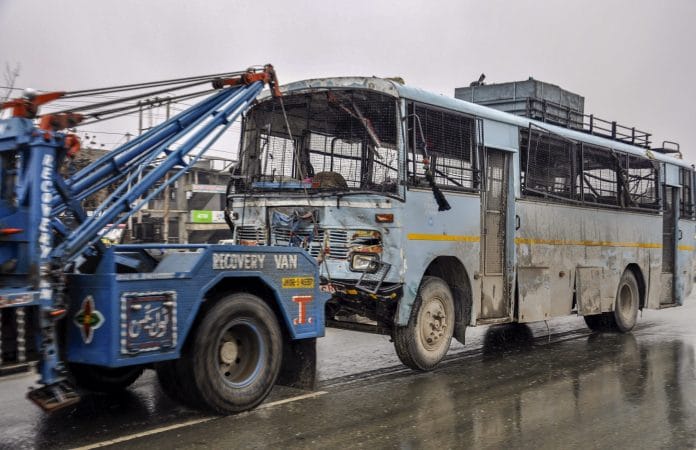Srinagar: Local militants from Jammu & Kashmir are increasingly using home-made Improvised Explosive Devices (IEDs) and car bombs, adding to the worries of authorities and security forces.
Two Army jawans died in Pulwama Tuesday, a day after their convoy was attacked by a car packed with explosives and remote-controlled by an alleged Hizbul Mujahideen militant. This attack came just months after the same modus operandi was employed by a local Jaish-e-Mohammed (JeM) militant to kill 40 CRPF personnel in the same area.
Days after the February Pulwama attack, a car bomb was directed at another CRPF convoy in Banihal but the attack was thwarted.
Add to this intelligence inputs as well as a recent video of a policeman-turned-militant making an IED, and there are worries that more such attacks may be in the offing to target security forces.
According to security officials, the 14 February attack on CRPF personnel may have “emboldened” militant outfits with the heavy casualties inflicted by a single attacker.
Pushed to the corner?
Senior security officials told ThePrint that they expect the frequency of such strikes to increase on account of the “massive losses” Kashmir-based militant outfits had suffered in counter-insurgency operations since 2018.
Over 110 militants have been killed so far this year, compared to 103 in 2018. Overall, the security forces killed 270 militants in 2018, compared to 220 in 2017.
K. Vijay Kumar, the senior security adviser to J&K Governor Satyapal Malik, said the forces had been able to inflict great damage on militant ranks by killing senior commanders, thus “rattling the outfits”.
“Targeting forces using car bombs or IEDs is an indicator of how militancy is being defeated in conventional warfare,” Kumar added. “Recruitment of local militants is at an all-time low. The attacks in the last few weeks have been orchestrated by Pakistani terrorists.”
Another senior government official said that, at present, more than 250 militants are active in the Valley, most of them locals. Each militant, the official added, is believed to have a network of at least four to five overground workers (OGWs), civilians who serve as their eyes and ears.
Also read: Random phone call, not Pakistan, tipped off Indian High Commission about IED attack in J&K
The foreign shadow
While policeman-turned-militant Syed Naveed of the Hizbul Mujahideen has emerged as a suspect in Monday’s attack, police sources did not deny the possibility of foreign involvement.
“We have to find out who trained the individuals behind the (Monday) attack and provided them with the material to carry it out,” said a senior police officer.
“Foreign (Pakistan-based) Jaish and Lashkar militants have the training to conduct such attacks and build their own bombs. They impart this training to local recruits, but local militants of outfits like the Hizbul Mujahideen have not employed these tactics. This could be a major concern,” he added.
“Even if IED bomb-makers from Jaish are not there to train local Kashmiri recruits, there is a lot of open-source material available online, where one can access bomb-making techniques,” said the officer. “The availability of material to make the bombs is made possible by the OGW network of militant outfits.”
Hizbul Mujahideen, which accounts for most of the militants operating in the Valley, hasn’t been known to carry out blasts in the Valley in the post-Burhan Wani insurgency, which kicked in with the Hizbul commander’s killing in 2016. This marks a major shift from the modus operandi employed by the outfit during the early phases of militancy.
Also read: Amit Shah & Rajnath Singh to ‘refine’ collaboration to finish Kashmir’s terror chiefs






